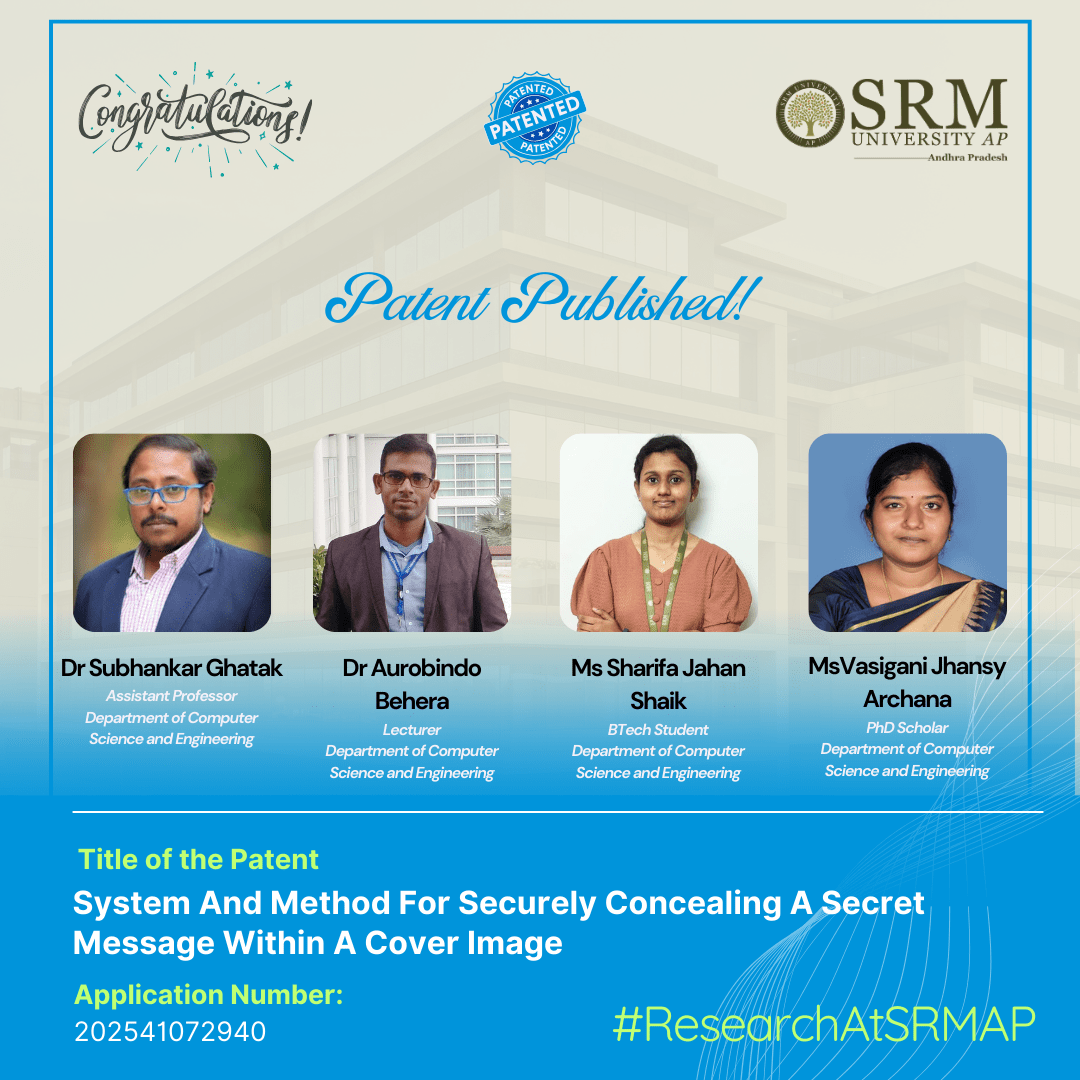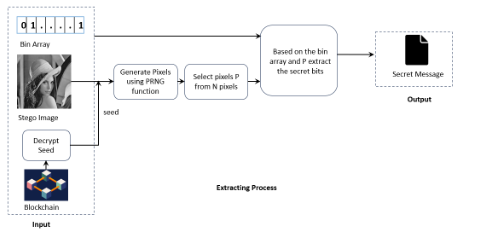 The Department of Computer Science and Engineering has filed and published a patent application titled “System and Method for Securely Concealing a Secret Message within a Cover Image” (Application No. 202541072940) in the Patent Office Journal. The invention is credited to Dr Subhankar Ghatak, Assistant Professor, Department of CSE, Dr Aurobindo Behera, Lecturer, Department of CSE (SRM Education), Ms Sharifa Jahan Shaik, U G Student, Department of CSE, and Ms Vasigani Jhansy Archana, Ph.D. Student, Department of CSE.
The Department of Computer Science and Engineering has filed and published a patent application titled “System and Method for Securely Concealing a Secret Message within a Cover Image” (Application No. 202541072940) in the Patent Office Journal. The invention is credited to Dr Subhankar Ghatak, Assistant Professor, Department of CSE, Dr Aurobindo Behera, Lecturer, Department of CSE (SRM Education), Ms Sharifa Jahan Shaik, U G Student, Department of CSE, and Ms Vasigani Jhansy Archana, Ph.D. Student, Department of CSE.
This innovation introduces a new paradigm in data hiding, advancing beyond conventional steganography techniques. Unlike traditional methods that subtly alter a cover image to embed secret information, this approach leaves the image entirely untouched.
By leveraging Pseudo-Random Number Generation (PRNG) in combination with the cover image and securely storing the PRNG seed value on the Blockchain, the system achieves unparalleled data security and integrity. As a result, the cover image remains completely unmodified, ensuring minimal distortion and highly reliable message retrieval.
Abstract :
This invention presents a novel approach to data hiding that differs from conventional steganography techniques. Unlike traditional methods, which modify the cover image to embed secret data, this methodology ensures the cover image remains completely unaltered. The technique employs Pseudo-Random Number Generation (PRNG) in conjunction with an array and the cover image to conceal secret data. The PRNG seed value is securely stored on the Blockchain, thereby enhancing both uniqueness and security. Since the cover image undergoes no modification, the proposed approach achieves a minimal Mean Squared Error (MSE) for the extracted secret image.
To hide a message in a picture, the usual way is to change the picture slightly—for example, by altering a few pixels so the difference is hard to notice. But if someone examines the image very closely, they might detect something unusual. Our method works differently. It’s like hiding a treasure without ever touching the map. Instead of altering it, we use a secret formula and a random number generator to decide where the hidden information would be if we needed to retrieve it later. The key to that formula is securely stored on the Blockchain, like locking it inside an unbreakable safe. As a result, the picture stays 100% original with no changes, and only the person who has the Blockchain secret key can uncover the hidden message.
Practical implementations :
Military Communication: Steganography can securely encode sensitive data, like that of meeting locations (latitude and longitude), ensuring that critical information remains hidden from adversaries.
Password Protection: Individuals can embed passwords within images, offering an additional layer of security and reducing the risk the unauthorized access.
Covert Communication: Activists or journalists in repressive regimes can use steganography to communicate securely by hiding messages within innocuous-looking images or files.
Medical Image Security: In healthcare, patient data can be securely embedded within medical images, ensuring data confidentiality while sharing the images with specialists.
Future research plans:
AI-Assisted Stealth Optimisation: Use Machine Learning to predict detection patterns and further improve the undetectability of hidden data.
Cross-Platform Media Support: Extend beyond images to videos, audio streams, and 3D models, ensuring zero modification across formats.



